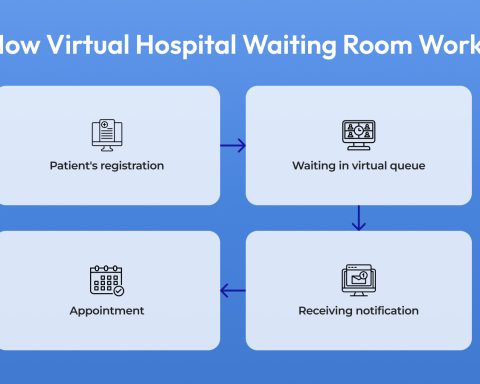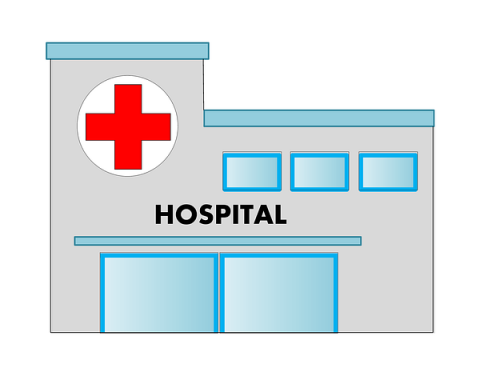Accidents happen, people get sick, unexpected health issues pop up, problems occur when you least expect it – this is why there are emergency rooms and why millions of people go to them every year. Yet, visiting the emergency room can be very stressful and scary. You don’t know what is going to happen to you. You have no idea what is wrong with the other people sitting next to you. You can only imagine what the doctor or nurse is going to do to you. There are so many questions and uncertainties that creep up – it’s no wonder emergency rooms are terrifying.
In the midst of it all, however, hospital emergency rooms provide a service that is so necessary for our everyday living. There is nowhere else that helps to fix, heal, or alleviate pain, discomfort, and life-threatening diseases or accidents on such an immediate and regular basis. The doctors and nurses in an emergency room are trained and experienced to help with so many issues. Every day, they are barraged with ailments and physical problems such as broken bones from sports injuries, car accidents, heart attacks, strokes, pneumonia, viruses, asthma attacks, gunshot wounds, unconsciousness, and so much more. No other department in a hospital deals with so much on a typical day or week. It’s no wonder emergency rooms are always striving to become better and improve their health care for each patient entering their four walls. For such an example, visit this site to see what is being done.
To alleviate some of the difficulties with emergency room procedures, there are a few methods that some hospital emergency rooms are utilizing to take better care of their patients. They include developing better staffing patterns and schedules, easier registration processes, more accurate triage assessments, and faster access to qualified professionals.
Better Staffing Schedules and Patterns
One of the greatest problems in an emergency room setting is the ratio of patients that visit than the amount of medical staff present. Depending on the number of casualties or injuries or sicknesses abounding, there may or may not be enough qualified help to assist with all the duties necessary. This can highly affect the quality of care given in a set period.
The issue is resolved by revising staffing patterns and scheduling changes. By applying analytics to the data regarding patients and their ailments over time, a conclusion resulted in the findings that certain times of the year were busier than others, and seasons and holidays played a big part. A more accurate schedule can be designed to clarify the situation and adjust and align more healthcare during those timepieces by assessing patients’ volume with their arrivals and problems.
Registration
Registration is a vital component of the healthcare process. It is critical that the registration staff quickly identifies and confirms the correct patient information for any other processes to begin. Sometimes the paperwork that is involved can be tedious and take an excessive amount of time to complete. This only delays the ability of the patient to receive the much-needed health care that is warranted.
To improve this procedure, a quicker registration method had to be developed. A better practice was installed that required only a few questions to be answered regarding the triage care given to any given patient. To finalize the process, completing any remaining questions regarding the patient is done during the actual hospital stay.
Triage Improvements
Triage is the process of determining the degree of urgency for illnesses or wounds with a corresponding patient. It assigns the importance of medical attention each patient needs according to the severity of the ailment or problem.
In a hospital emergency room, this procedure is critical. Discerning the severity of a patient’s health is crucial as it may prove a life-threatening situation. Time is of the essence, so proper triage procedures must be employed.
To improve upon triage workflow, health care professionals solicit only a few prime questions to ensure a rapid triage experience. This helps determine the severity of the problem and allows the appropriate doctor and services to be notified for immediate response.
If the situation is not a life-threatening one, patients are categorized by how critical their condition is. This results in opting for patient placement in a hospital bed or waiting to allocate other resources. Examples will be having chest pain or bleeding compared to a patient with a rash or sprained ankle. Triage would then accommodate these symptoms in the appropriate time construct.
Faster Access to Qualified Professional
Sometimes sitting in an emergency room can feel like an eternity has gone by. You wait and wait to wait even more. You’re not sure what is wrong with you, only to find out that you will have to wait, even after you’ve been through triage. While you are sick or in pain, waiting for the doctor to appear can take even more time.
Many emergency rooms have implemented a new position to assess and provide assistance for such patients to combat this problem. They are called a Triage Advance Practitioner (TAP). This is a registered nurse practitioner or a physician’s assistant that works in the emergency room to help reduce waiting times. The TAP is responsible for ordering tests for diagnoses, such as EKGs or imaging tests. They also help alleviate the extra waiting period between entering the emergency room and being seen by a specializing doctor.
Although there will always be a period of unpredictable circumstances in an emergency room, having extra trained personnel available to accommodate patients is a boost for their health care predicament. However, with extra personnel comes different communication issues. Many hospital emergency room workers attend a mid-afternoon huddle to keep all professionals knowledgeable about their patients to solve this issue. These are now team-based to help organize the doctors and nurses’ routines so they may best provide their services regarding the analytics of their patients.
Conclusion
Life brings unexpected accidents and problems our way. We may experience sicknesses, diseases, injuries, or disabilities. When we do, we may need to go to an emergency room. It is a great relief that through all the fear and trepidation, we know that we shall be taken care of in the best possible manner by the increasing care of the doctors and nurses that work in an emergency room.
About the Author: Diana Palmer
Diana Palmer regularly publishes content about healthcare industry trends on her blog. With thousands of readers worldwide, Diana aims to help individuals understand what’s happening in the healthcare industry and provide tips on how they can benefit from it.
Aside from writing, Diana also loves to hike with her friends during weekends.








Thank You so much for this information.